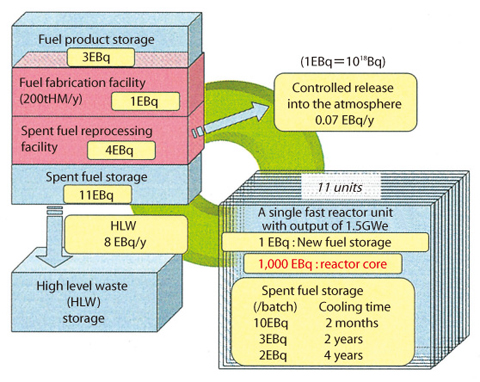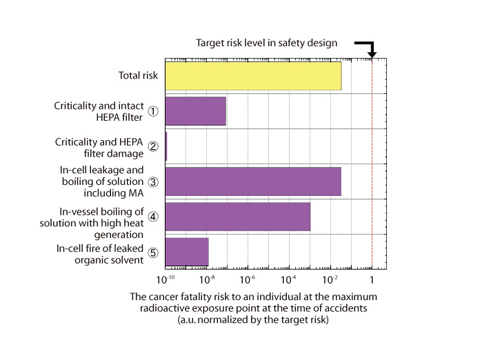
Fig.1-24 Radioactivity inventory in the fast reactor cycle

Fig.1-25 Breakdown of the public cancer fatality risk in
the aqueous reprocessing facility upon various accidents
Fig.1-26 Effect of the probabilistic safety assessment
on the conceptual design of fast reactor cooling systems
Systematic risk analyses were conducted on design concepts of fast reactors (FR), spent fuel reprocessing facilities and fuel fabrication facilities formulated in phase I of the feasibility study on commercialized FR cycle systems, aiming at restraining adequately the entire risk of the FR cycle and assuring safety.
First, envisioning an FR cycle that consists of 11 FR units with the output of 1.5GWe and a pair of fuel cycle facilities that can treat 200tHM of reactor fuel per year, corresponding to operation of the 11 units, the radioactivity inventory of each facility was calculated. Fig.1-24 shows the result that radioactivity in the fuel cycle facilities (total about 5×1018Bq) is about 1/200 of that in the single FR unit (about 1000×18Bq). Then, a probabilistic safety assessment (PSA) of the solution system in the aqueous reprocessing facility was made in order to obtain comprehensive and simple analysis and estimation of the public risk due to abnormal radioactive material release outside the facility. Fig.1-25 shows that the risk is lower than the target risk level in the safety design and that criticality and fire make a small contribution to the risk. Our risk analysis of FR fuel cycle is the first such trial in the world and it is necessary to develop further our analytic model and data in the future.
Since the severe core damage can be regarded as a dominant factor in the risk of the sodium-cooled FR, the core damage frequency of some design concepts was calculated through PSA based on the component operating time and failure instances that were accumulated in the sodium-cooled FR. In the conceptual design stage, adequate safety must be verified in selecting the basic design concept to be refined in future design and development work. From the safety point of view, it is important to select a design concept that will certainly attain the targeted core damage frequency based on all the current available information. As shown in Fig.1-26, the present study served to selection of the suitable concept from among the design options of the reactor cooling system.